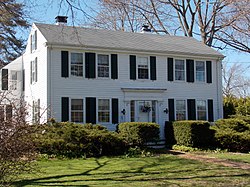Personal life

Then a merchant in Boston, Hawes married Elizabeth Leeds (b. July 30, 1775) on July 13, 1806, in Dorchester. They had two children: Gustavus (1807) and Sarah Elizabeth (1809). [1] After the death of his wife, he moved north to Brunswick, Province of Massachusetts, where he was an agent of a factory. [1]
He married for a second time on May 4, 1817, [5] to Susan Blanchard Russwurm, a twice widower. Her first husband, James Humphrey Blanchard, died in Montreal in 1812; her second, John R. Russwurm, died in Back Cove in 1815. With Susan, Hawes had the following children: Marcia Scott (1818), Clarissa (1820), Joseph (1822), Mary Goold (1824), Matilda (1827), William (1832) and Elizabeth Russwurm (1835). Susan already had three children — Ann, Susan and James — from her first marriage, and one — Francis Edward Russwurm (b. 1814) — with her second husband. [1] (To hold property in the West Indies, John Russwurm married "a colored woman", with whom he had John Brown Russwurm in 1799.) [1] [5] At this stage, there were four intertwined bloodlines from the various marriages. He was known to say he "had nine children, and my wife has eleven, and but thirteen all counted." [1]
Hawes moved to the Back Cove farm (now known as the John B. Russwurm House) of his wife and her ex-husband after 1817. [1] [6]
Hawes was listed on the payroll of the Maine House of Representatives, the lower house of the Maine Legislature, in 1835. [7]
In 1850, Hawes owned a house on Yarmouth's Main Street, where today's First Parish Congregational Church was built in 1867. That house was moved a short distance to 23 Storer Street. [3]